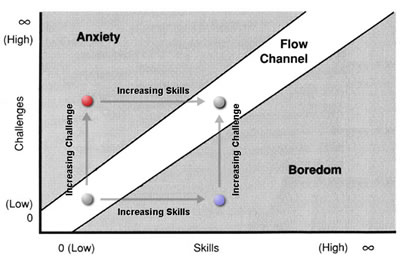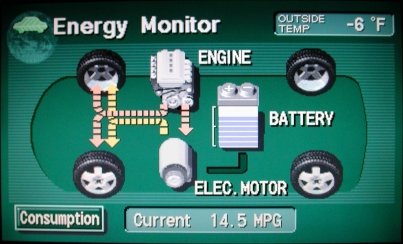Balancing Boredom and Anxiety in Design
In an earlier post I described how the video game industry uses a variety of tactics to dynamically adjust the difficulty of play. These tactics can be adapted to a wide variety of customer experiences including interactions with your website, voice response units, kiosks and more fundamentally as features and functions of your core offering.
Dynamically adjusting the difficulty of an interaction is really the problem of achieving “flow” or an optimal performance state (frame of mind) that lives in the zone between boredom and anxiety.
An excellent post on Boxes and Arrows explores the psychology the flow state (ala Mihaly Csikszentmihalyi) and offers some advice on how to design for emotion and flow. The post includes the following figure that illustrates that flow is a dynamic balance between boredom and anxiety.

Figure 1:Anxiety, Boredom and Flow (Csikszentmihalyi, 1990) (captions added van Gorp, 2006).
To achieve flow we need artifacts that “have a clear goal, provide immediate feedback on attempts to reach the goal and offer a challenge that you are confident you have the skills to achieve.”
One area this is getting some traction (pun intended) is with the new sport in the US called hypermiling. The idea is that a driver pulls out all the stops to maximize the mileage they are getting. The GOAL is to beat the EPA mileage rating on your car. Toyota helps put drivers in the “flow state” for hypermiling by providing real-time feedback on the effects various actions (e.g. rapid acceleration or braking) have on your gas milelage.
Makes you wonder what else cognitive design can do to help relieve the boredom of driving and keep us in the flow state. I know there are at least three graduate students at Northwestern University that working hard to answer that question!
